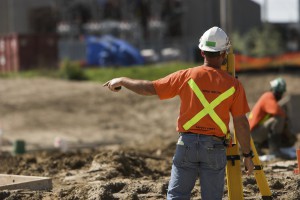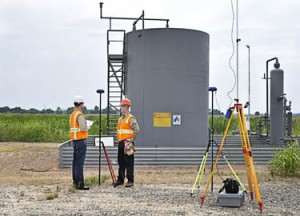How a Land Survey Company Helps Get Your Team Up to Speed on Projects
 New technologies such as GIS mapping are helping to drive the oil and gas boom forward, providing a greater level of visibility and detail that lets companies make more informed decisions. However, in order to fully take advantage of the possibilities offered by these new technologies, companies need to make sure that they are providing an easy way for their employees to access the maps, documents and information they need.
New technologies such as GIS mapping are helping to drive the oil and gas boom forward, providing a greater level of visibility and detail that lets companies make more informed decisions. However, in order to fully take advantage of the possibilities offered by these new technologies, companies need to make sure that they are providing an easy way for their employees to access the maps, documents and information they need.
Getting New Employees Up To Speed
This problem is especially challenging in the case of new employees. When employees join a project from outside the company, or move over from another department within the same company, they often find themselves having to start from square one. While other employees can find information from past e-mails or coworkers they know are familiar with the project, new employees don’t have this luxury. Instead, they often find themselves having to sift through massive archives of maps and other documents trying to find the information they need. This process is inefficient and time-consuming, and it can even cause a project to grind to a halt.
The Solution: Cloud Based Project Management
What oil and gas companies need to combat this problem is greater organization and centralization of project assets. Fortunately, some land surveying companies provide project management solutions that help make the process of managing and organizing project assets a simple and ingrained part of a company’s everyday operations. This helps ensure that employees and authorized subcontractors will always have access to all the documents they need to do their jobs well. In turn, this will help significantly reduce the time it takes for new employees to go from uninformed to contributing members of the team.
Easy Access Across All Device Types
Perhaps one of the greatest benefits offered by cloud based project management solutions offered by a land survey company is that they can provide the only information and documentation portal that a company could ever need for a specific project. In the past, important documents might have been stored in different locations throughout a company. This meant that a new employee would often have no idea where to start looking to find the documents they needed.
They would have to waste their own valuable time, as well as their colleagues’ time, tracking down those documents. Worst of all, since there was no single repository to cover the entire project, different employees might end up working with different versions of the same document, which could lead to confusion and miscommunication.
Project management solutions provide the single document repository oil and gas teams need to keep everyone on the same page. In addition, this one central repository can also be accessed from anywhere, meaning that employees can always access the documents they need, even if they need to do so using a tablet or smartphone while working in the field.
The Delicate Balance of Security and Easy Access
To ensure the level of easy access to information and documents that new employees need in order to get up to speed quickly, project assets can’t be stored on internal company networks that have special access requirements. This creates another challenge, as companies still need to be certain that their sensitive data is secure.
A project management platform can provide the balance between security and openness, allowing companies to store assets off their network for easy access, while also relying on the dedicated data security of a third-party partner–the land survey company. This means that new employees will always be able to access the assets they need, without exposing the company to risk.
Contact us today to learn more about how out how a land survey company can make project management easier. If you want to get started with Landpoint’s cloud-based project site, you can sign up here.


 Many large projects rely on detailed, accurate maps. Landpoint understands the intricacies of creating accurate technical maps, and we leverage GIS technology to ensure the highest level of accuracy with the most complete sets of data. Read on to learn why GIS is one of the most important land surveying methods available to construction managers.
Many large projects rely on detailed, accurate maps. Landpoint understands the intricacies of creating accurate technical maps, and we leverage GIS technology to ensure the highest level of accuracy with the most complete sets of data. Read on to learn why GIS is one of the most important land surveying methods available to construction managers.